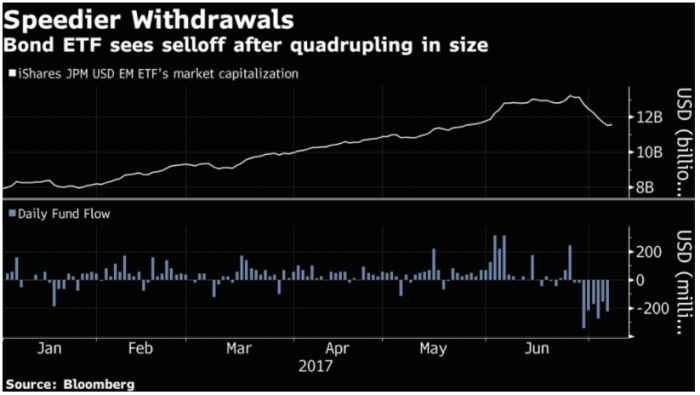We’ve written a ton here lately about the exceedingly long-in-the-tooth rally in all things emerging markets.
The space’s YTD outperformance makes sense on some levels but flies in the face of reason on others.
Yes, the carry trader’s paradise created by DM central banks and the attendant global hunt for yield is in many respects the only thing that matters. It’s the controlling factor. The proximate cause.
But EM is, well, EM. Which means that all of the fine print still applies.
There’s idiosyncratic political risk that may or may not spill over to the entire complex when it flares up in one country or another (Brazil and Turkey being great examples).
There’s the risk that the entire space could be destabilized with one misstep on China’s tightrope walk where staying in balance means deleveraging without choking off credit to the economy. There are commodity prices to worry about.
And, perhaps most importantly, there’s the possibility that DM policy normalization will turn inflows into outflows from EM assets that have benefited from an influx of cash.
On that latter point, it’s worth noting that the iShares JPMorgan USD Emerging Markets Bond ETF suffered $1.2 billion in outflows over two weeks earlier this month, a stretch which erased more than a quarter of the fund’s YTD inflows:

Well, one other critical factor to consider is growth – or, more importantly, the growth impulse.
“Emerging market assets tend to outperform their developed market peers when the growth differential between EM and DM widens, and vice-versa during periods of a declining differential,” Goldman wrote, in a note out Friday.

That’s equities. Needless to say, the same generally holds true for credit and FX (the following charts plot spreads and EM FX against Goldman’s current activity indicator for EM):

So given that, what’s the outlook going forward?













Leave A Comment